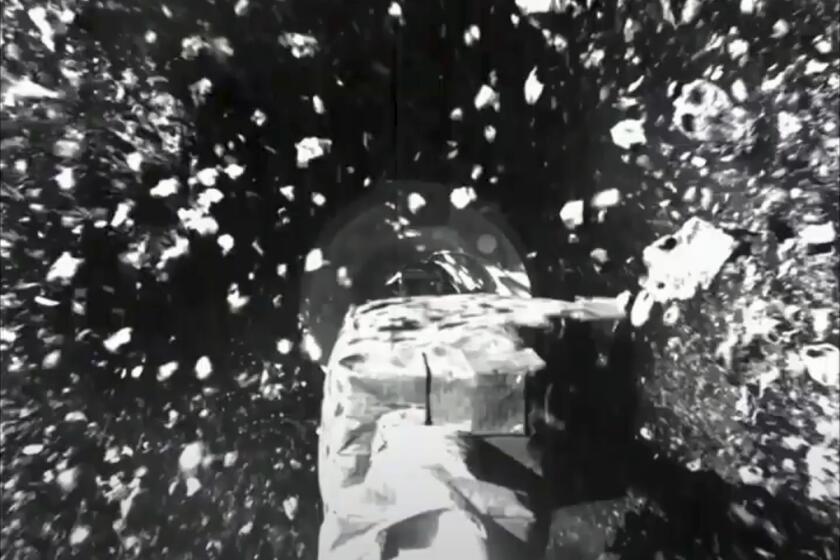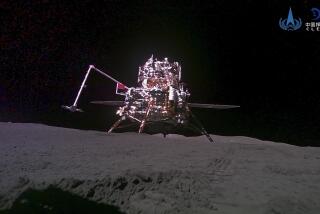Asteroid samples tucked into capsule for return to Earth

- Share via
CAPE CANAVERAL, Fla. — A NASA spacecraft more than 200 million miles away has tucked asteroid samples into a capsule for return to Earth after losing some of its precious loot, scientists said Thursday.
Flight controllers moved up the timetable for the crucial operation after some of the collected rubble spilled into space last week.
The OSIRIS-REx spacecraft gathered pebbles and other pieces of the asteroid Bennu on Oct. 20, briefly touching the surface with its robot arm and sucking up whatever was there. So much was collected — an estimated hundreds of grams’ worth — that rocks got wedged in the rim of the container and jammed it open, allowing some material to escape.
Whatever is left won’t depart Bennu’s neighborhood until March, when the asteroid and Earth are properly aligned. It will be 2023 — seven years after OSIRIS-REx rocketed from Cape Canaveral — before the samples arrive here.
NASA’s OSIRIS-REx spacecraft crushed rocks and sent rubble flying as it briefly touched an asteroid, a strong indication that it had succeeded in collecting samples.
This is the first U.S. mission to go after asteroid samples. Japan has done it twice at other space rocks and expects its latest batch to arrive in December.
Rich in carbon, the solar-orbiting Bennu is believed to hold the preserved building blocks of the solar system. Scientists said the remnants can help explain how our solar system’s planets formed billions of years ago and how life on Earth came to be.
The samples also can help improve our odds of survival, they said, if a doomsday rock heads our way.
Bennu — a black, roundish rock bigger than New York’s Empire State Building — could come dangerously close to Earth late in the next decade. The odds of a strike are one in 2,700. And even if there is a collision, while packing a punch, it won’t wipe out our home planet.







